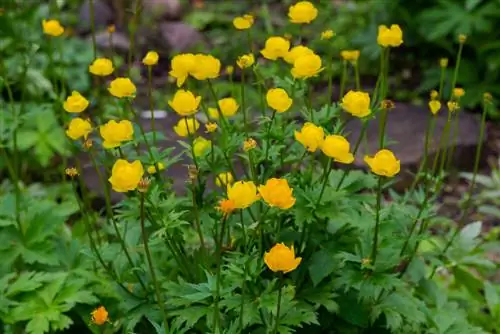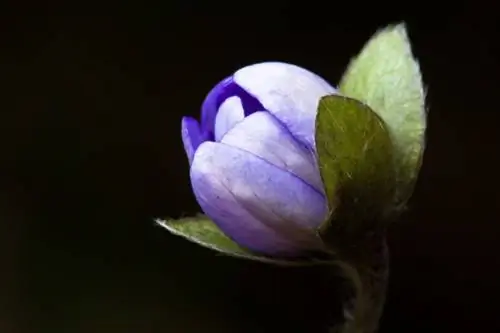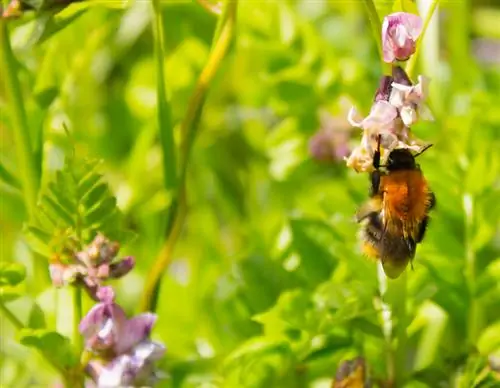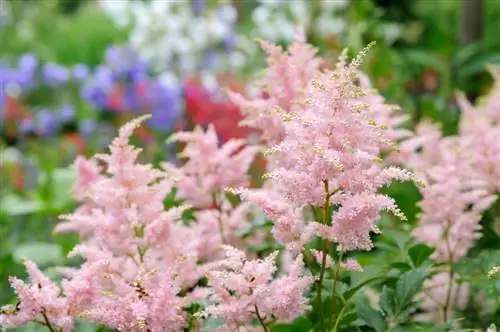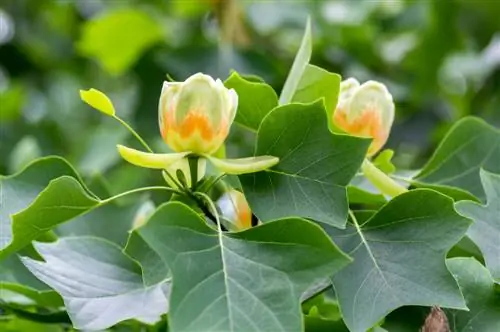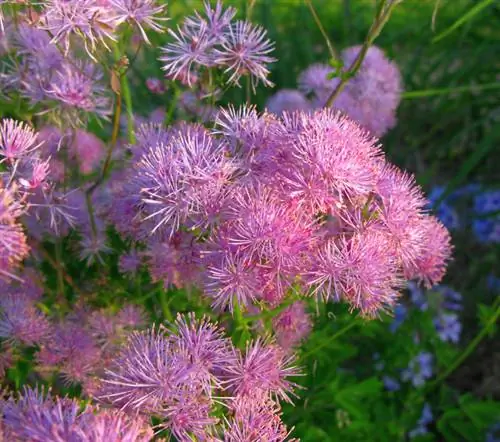- Author admin [email protected].
- Public 2023-12-25 17:45.
- Last modified 2025-01-23 11:22.
The magical globeflower transforms wet meadows, pond banks and damp embankments into a bright yellow sea of flowers. The perennial offers bees, bumblebees and butterflies a rich nectar table. In order to successfully integrate the golden head into the garden, only a few criteria need to be met. The following answers to frequently asked questions explain how the endangered flower becomes at home in your green kingdom.

How do I care for a globe flower in the garden?
The globe flower is a magical perennial that transforms wet meadows and pond banks into a yellow sea of flowers. To integrate them into the garden, plant them in a sunny to partially shaded location with moist, nutrient-rich soil and keep the soil constantly moist.
Planting troll flowers correctly
Ideally plant the graceful perennial in spring from mid/late April in a sunny to partially shaded location. The soil should be fresh, moist to swampy and nutrient-rich to welcome the globe flower. Soak the potted root ball in water while you rake and weed the soil. Following this preparation, the following steps continue:
- Dig several planting holes 35 cm apart that provide enough space for the root balls
- Enrich the excavation with compost and horn shavings
- Plant the potted gold heads in the middle so that the soil reaches just below the bottom pair of leaves
Press the substrate with your hands, water generously and spread a mulch layer of leaves or grass clippings.
Care tips
The enchanting butter ball is now threatened with extinction because little attention has been paid to its needs. If you pay attention to the following care measures, the globe flower will remain loyal to you for many years:
- Keep the soil constantly moist
- From March until the end of the flowering period, fertilize every 3-4 weeks with compost and horn shavings
- Cut off wilted flower stems as soon as possible for continuous rebloom
- Pruning close to the ground in autumn
So that the magical floral creature gets through the cold season he althy, cover the planting site with compost, leaves and coniferous twigs after the autumn pruning.
Which location is suitable?
Assign the globeflower to a sunny to partially shaded location. Here it competes with the sun when the soil is fresh, moist to boggy and rich in nutrients. The perennial therefore acts as a richly flowering problem solver for wet soils where other flowers quickly fail. Along the stream, on the banks of the pond and as part of an opulent wet meadow, the buttercup is an indispensable part of a functioning plant community.read more
What soil does the plant need?
If you are struggling with a moist to swampy-loamy location in the garden, the globe flower solves the problem with its lavish abundance of flowers. As long as the sun's rays pamper the flower for at least 4 hours a day, sensitive wet regions will no longer remain ungreened. Conversely, the golden head does not want to be confronted with sandy, dry soil, even if the sun shines there constantly.
When is flowering time?
The diverse plant genus gives us flowers with different bloom times. Cleverly combined, you can enjoy the floral splendor for many weeks. We have compiled the flowering times of popular species and varieties for you here:
- Earliest of All: Flowering period from April to May
- European globeflower: flowering period from May to June
- Golden Queen: flowering period from June to July
If you clean out withered flowers consistently, new flowers will always appear to show off their beauty.read more
Cut the troll flower correctly
Although the entire flowering period lasts 8 weeks or longer, the individual flowers only last a few days. Therefore, cut off all withered flower heads regularly so that the next buds develop unhindered. Don't be afraid to cut the most beautiful flower stems for your home vase. The abundantly blooming perennial fills the gap in no time. If the summer blossom festival is coming to an end, give the flower time to sow itself. In autumn, cut off the drawn-in plant parts close to the ground and spread a layer of leaves or compost over the root disk.
Watering troll flower
The high water requirement of a globe flower results in regular watering. Keep the soil and substrate constantly moist without allowing long drying phases. Experience has shown that watering is the order of the day during the summer flowering period. Short-term waterlogging is tolerated, but should not become a permanent condition.
Fertilize the troll flower properly
Organic fertilization with compost and horn shavings meets the needs of a globe flower perfectly. From March until the end of the flowering period, apply the nutrients directly to the root disc every 3-4 weeks and then water extensively. When grown in pots, the golden head happily accepts a liquid fertilizer for flowering plants every 14 days. Stop applying fertilizer by August at the latest so that the perennial matures before winter.
Wintering
As a pure species, the European globe flower is completely hardy. Since the more sensitive hybrids are mostly cultivated in private ornamental gardens, proper overwintering is important. Cut the perennial close to the ground before the first frost. Then spread a protective layer, which often consists of mature compost. Alternatively, a layer of autumn leaves keeps the winter cold away, ideally secured with brushwood or pine fronds.
Propagate troll flower
For propagation, we recommend dividing the root ball. To do this, dig up the perennial in spring and cut the rhizome into two or more segments. As long as a section has at least 2 eyes, another globe flower will sprout from it in the new location. It is important to note that you do not place the rhizome pieces deeper into the soil than before.
Is globeflower poisonous?
The globe flower contains an alkaloid typical of the buttercup family, which causes mild symptoms of poisoning when consumed intentionally or unintentionally. Sensitive people react allergically when their skin comes into contact with the plant sap. Therefore, wear protective gloves during all planting and care work. The perennial is considered poisonous to pets, while it is avoided by grazing livestock.
Troll flower not blooming
If the globe flower does not bloom, it is usually reacting to an unsuitable location. Note the combination of plenty of sun and moist to wet, nutrient-rich soil, which is unusual for common perennials. If one aspect is neglected, the butter ball refuses to bloom. In addition, golden heads propagated from seedlings can take up to 3 years before they produce their first flowers.
Beautiful varieties
- Golden Queen: Royal flowers in bright orange, accompanied by finger-shaped leaves; Growth height 20-80 cm
- Lemon Supreme: Beautiful with golden yellow, bulging flowers and elegant habit: height 50-60 cm
- Earliest of All: With its orange flowers, the variety outperforms its counterparts by weeks from April onwards; Growth height 60 cm
- Helios: The historic flower has been captivating with lemon-yellow, spherical flowers since 1907; Growth height 50-60 cm
- Alabaster: Creamy white flower beauty that contrasts wonderfully with yellow-flowering globe flowers; Growth height 40-50 cm

